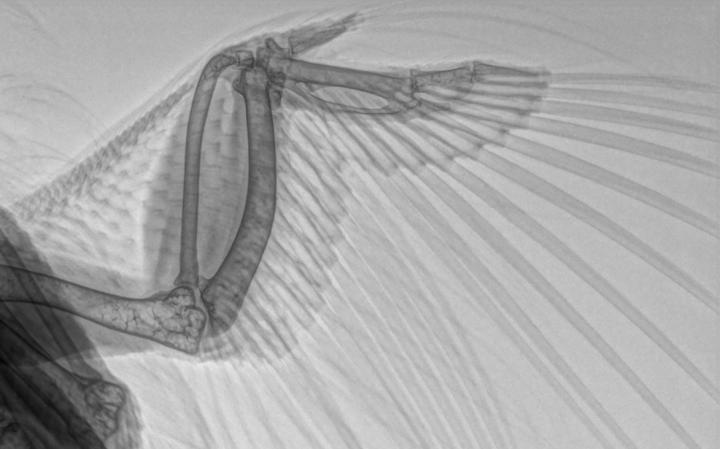Genetics
Understanding the genetic architecture of complex traits and development in poultry.

Improving poultry welfare and production traits
Roslin researchers have studied the genetic basis of maternal behaviour in poultry, known as broodiness1, genes involved in cuticle deposition in the egg that protects eggs from infection by microorganisms2 and developed new methods to assess bone quality in laying hens to develop breeding strategies for improved bone quality3.
Immunity & disease resistance
Methods have recently been developed by Roslin scientists to quickly and accurately evaluate disease responses in chickens using a highly multiplexed quantitative PCR-based platform4. In addition, Roslin scientists have recently sequenced hundreds of novel bacterial genomes from the caecum in both fast and slow-growing broiler breeds5. This research will advance our understanding of the avian immune system, because microbiota of the chicken gut influences pathogen protection as well as immune system development.

The chicken as a model for the study of genetic diseases
Chicken embryos have been used to identify new candidate genes and pathways involved in late eye development, health, and disease. This research will improve our understanding of eye development and genetic mutations responsible for human disease including ocular coloboma6, when there is a hole in one of the structures of the eye. This work was facilitated by using the Membrane GFP fluorescent reporter chicken line. Insights from chicken mutants such as talpid3 held at the NARF have provided direct insights into clinical genetics and specifically the genes responsible for limb abnormalities, including the presence of extra digits on the hands and feet, and ciliopathies in humans7.
Useful links
- Avian Genomics Group
- Centre for Tropical Livestock Genetics and Health (CTLGH)
- Ensembl vertebrate genome browser
- Functional Annotation of Animal Genomes (FAANG)
- GENE-SWitCH
Publications
- Basheer, A. et al. Genetic loci inherited from hens lacking maternal behaviour both inhibit and paradoxically promote this behaviour. Genet. Sel. Evol. 47, 100 (2015).
- Bain, M. M. et al. Enhancing the egg’s natural defence against bacterial penetration by increasing cuticle deposition. Anim. Genet. 44, 661–668 (2013).
- De Koning, D. J. et al. An eQTL in the cystathionine beta synthase gene is linked to osteoporosis in laying hens. Genet. Sel. Evol. 52, 13 (2020).
- Borowska, D. et al. Highly multiplexed quantitative PCR-based platform for evaluation of chicken immune responses. PLoS One 14, (2019).
- Glendinning, L., Stewart, R. D., Pallen, M. J., Watson, K. A. & Watson, M. Assembly of hundreds of novel bacterial genomes from the chicken caecum. Genome Biol. 21, (2020).
- Hardy, H. et al. Detailed analysis of chick optic fissure closure reveals Netrin-1 as an essential mediator of epithelial fusion. Elife 8, (2019).
- Davey, M. G., Towers, M., Vargesson, N. & Tickle, C. The chick limb: Embryology, genetics and teratology. Int. J. Dev. Biol. 62, 253–263 (2018).


